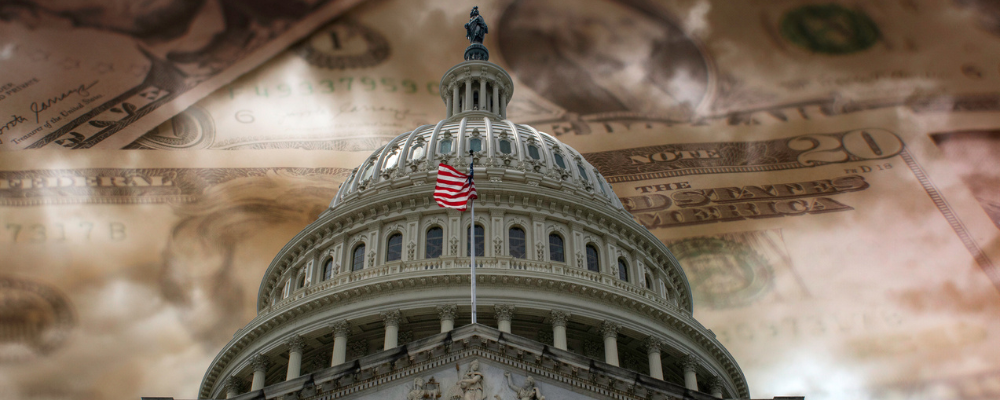This information is current as of May 16, 2025.
The House Ways and Means Committee has released a new draft tax bill that would extend several provisions from the Tax Cuts and Jobs Act (TCJA), many of which are set to expire in the coming years. The proposal includes new and expanded incentives for businesses, updates to individual tax rates and deductions, and a range of temporary relief measures scheduled to run through 2028. According to the Joint Committee on Taxation, the proposed tax changes would reduce federal revenue by an estimated $3.819 trillion between 2025 and 2034.
However, the bill hit an early snag in committee, where it failed to advance in a 16-21 vote after five Republicans voted against it. With only two GOP defections allowed, opposition from Reps. Chip Roy, Ralph Norman, Josh Brecheen, Andrew Clyde, and Lloyd Smucker marked a significant setback for leadership aiming to move the bill to the Senate before Memorial Day.
While it’s unclear which provisions will make it through the full legislative process, the draft offers a look at how lawmakers may approach changes to both individual and business taxes in the years ahead.
Business Provisions and Investments
From a business perspective, one of the biggest shifts is a permanent increase to the Section 199A deduction, known as the Qualified Business Income (QBI) deduction. The rate would move from 20% to 23% while also reducing some of the current limitations on specified service trade or business (SSTB) eligibility.
Bonus depreciation receives a near-complete restoration at 100% for short-lived investments placed in service between 2025 and 2029, which is significantly more generous than the scheduled drop-off that would take place otherwise.
Further supporting capital investments, Section 179 expensing limits would increase, enabling small and mid-sized businesses to deduct a larger share of equipment costs immediately. Additionally, the draft proposes a 100% expensing provision for certain structures in manufacturing, extraction, and agriculture sectors, but only if construction starts before the end of 2028 and these projects are placed in service before a set deadline.
In response to concerns about the cost of R&D capitalization, the bill temporarily reinstates full expensing for domestic research and development expenditures from 2025 through 2029. This measure also allows businesses that already began capitalizing R&D expenses between 2022 and 2024 to more quickly recover their remaining unamortized capital costs.
Meanwhile, the Section 163(j) limitation on business interest would revert to an EBITDA-based approach rather than an EBIT-based approach from 2025 through 2029. This translates into more favorable interest expense deductions, which generally benefits capital-intensive industries.
The new proposal takes aim at multiple clean energy incentives enacted or expanded in recent legislation. Core credits for solar, wind, nuclear production, clean electricity, hydrogen production, and other green initiatives would be either repealed or phased out by the early 2030s. Transferring energy credits, an option that offered flexibility, would end after 2027. These changes raise questions about how energy-sector companies might adapt their investment plans.
Individual Tax Planning
The Committee has signaled that it intends to make certain TCJA provisions permanent. One of the cornerstones is maintaining the TCJA’s individual brackets (10%, 12%, 22%, 24%, 32%, 35%, and 37%). These brackets otherwise would have expired near the end of 2025. The brackets would continue to be adjusted for inflation.
The draft also preserves the standard deduction introduced by the TCJA. In addition, it proposes a temporary “bonus” standard deduction ($2,000 married / $1,000 single) that would run from 2025 through 2028. At the same time, the personal exemption would remain off the table, moving the tax code toward fewer total exemptions and bigger standard deduction benefits.
One of the most contentious issues remains the state and local tax (SALT) deduction cap. Under this new draft, the SALT deduction cap would be set at $30,000, phasing down to $10,000 above certain income thresholds. This middle-ground figure has been debated, particularly by representatives from high-tax states who are pushing for an even larger limit. Negotiations may lead to adjustments on the SALT cap before the House votes. New provisions have also been included in the SALT area that could significantly change the pass-through entity tax calculations (PTET) for some pass-through businesses (S corporations and partnerships) and limit their ability to deduct certain state PTET payments as an entity-level expense.
Additionally, the estate and gift tax exemption would become a permanent fixture at a higher level of $15 million (up from $13.99 million), indexed for inflation after 2026.
Temporary Tax Incentives
The new bill also includes a handful of targeted, time-limited deductions from 2025 through 2028. These features include a specific deduction for tip income in traditionally tipped occupations and a deduction for certain overtime wages. Seniors could see a larger alternative standard deduction for a few years, although this benefit would phase down for higher-income individuals. Additionally, some vehicle loan interest could be deducted, but only if the auto is assembled in the United States.
Turning to family-focused tax relief, the proposal maintains the Child Tax Credit at $2,000 but would temporarily increase it to $2,500 between 2025 and 2028. This change is intended to bolster support for households during those years. Overall, these temporary provisions aim to provide tax relief to a broader base of the population.
Conclusion
As lawmakers debate and refine this draft, it is essential for both individual taxpayers and businesses to stay informed. Close monitoring of legislative developments can help everyone better prepare for potential shifts in deductions, rates, and credits. For more information on tax planning, contact PBMares Tax Partner Charles Dean Smith, Jr.





